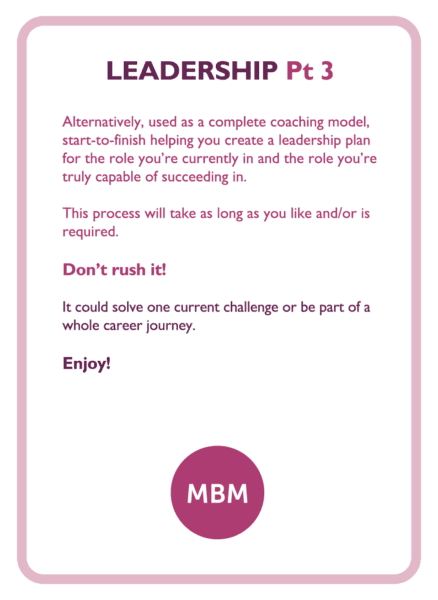What is Strategic Leadership? It’s The Vision Thing
I Love It When a Plan Comes Together
In general, Strategic leadership involves developing and implementing a vision which will bring success in a changing climate. For example, in a business, the vision usually involves gaining a competitive advantage in a particular market. Ultimately, strategic leadership involves influencing others in making and going with decisions that enhance the company’s long-term viability, while maintaining its short-term financial stability, and keeping everyone onside.
In this article, we look at different aspects of strategic leadership. We consider the necessary skills, qualities, and leadership styles, which everyone can develop. In passing, we touch on self-awareness and emotional intelligence, both necessary in working with others to achieve results. Additionally, we explore how strategic leadership’s insights can transform a company’s processes, so everyone benefits. Lastly, we end with some surprising insights from PwC, which show how few senior executives actually are strategic leaders. Nonetheless, there are recognised traits you can develop. Spreading a strategic leadership culture through your business encourages everyone to think like strategic leaders.
Strategic Leadership Starts with Seeing what’s In Front of You
Strategic leadership strengthens businesses by evaluating the current strategy. But how successful is it, and how much do we need to alter it to allow for likely future conditions? This self-examination may be painful and may create conflict between colleagues. Hence the need for self-awareness and emotional intelligence. The next step is ensuring the leaders understand and own the agreed strategy. Some businesses are successful for many years, but then things change, and they’re slow to react. Hence, they need to be proactive. This is where strategic leadership comes in.

Spot the Difference – Management, Leadership and Strategic Leadership
Leadership, management, and strategic leadership aren’t the same. Given that the three activities overlap, things can get confusing. So let’s start by clearing that up. Firstly, leadership is about directing the overall business. On the other hand, management involves leading teams and individuals to do their jobs and achieve the agreed goals. Strategic leadership straddles both, inspiring and motivating people to keep on keeping on, and leading the business on its mission.
What Do Strategic Leaders Do in Business?
Strategic leaders add value by:
- Understanding the company’s core mission
- Aligning the company’s activities with its mission
- Being clear about who the customers are, and how to add value to their lives
There’s more, but hold these three thoughts, and it will all become clearer
What is The Role of Leadership in Strategy Management and Implementation?

In strategy-making and implementation, leaders do the following:
- Develop a vision and mission
- Set goals and objectives
- Craft a strategy
- Execute the strategy
- Evaluate its performance
Strategic leadership involves visualising, planning, leading, and making the best of the available resources to execute strategies efficiently and successfully. In addition, it means being pragmatic, deciding and executing the plan, measuring the results and fine-tuning as you go.
There are 5 important components in strategy development. They are:
- High-level cognitive activity (thinking) by the leader and others
- Gathering multiple inputs to formulate the strategy
- Anticipating and creating a future
- Revolutionary thinking
- Creating a vision
The inputs you need to formulate your strategy will vary, depending on your situation and your industry sector. The goals will vary, too. In the beginning, we mentioned that the vision, and hence the strategy, for a business is usually about gaining a competitive advantage. Porter’s generic strategies describe how companies pursue competitive advantage. There are three or four generic strategies, lower cost, differentiated or focus. It’s a topic worthy of a separate study. But for now, remember this. Clarity about your chosen strategy is as important for your short-term financial stability, as for your long-term viability.

>> Caroline Leadership Coaching Deck <<
What Kind of Person Makes a Good Strategic Leader?
You don’t need to be a particular personality type to be a good strategic leader. However, it helps to have some specific characteristics, which you can develop.
The 5 ‘c’s of Strategic Leadership
Here are two sets of characteristics people have identified as important in strategic leadership:
- Credibility
- Communication
- Commitment
- Confidence
- Creativity
- ‘Can do’ attitude
- Connect
- Collaborate
- Candour
- Care
Think about them and how they overlap.
What is a Good Example of Strategic Leadership Behaviour?

People talk about CEOs who welcome feedback and challenges as strategic leaders. Also, some of them even share meals with their employees periodically, to get open and honest feedback. But there’s more to this than hanging out, walking the floor and being friendly, approachable, and visible. To clarify, here are some specific ways to energise people in your business:
- Delegate
- Embody transparency
- Be open to suggestions
- Make calculated decisions
- Teach failure as a learning mechanism, not something to be ashamed of
- Foster collaboration between colleagues and departments
- Encourage experimental learning
- Consider people’s potential
- Learn from experience
- Support self-access and reflection
- Welcome development and innovation
Why is Strategic Leadership so Important?
Growing businesses need people who are growing. Hence, people’s development needs to be nurtured and directed, which involves working with established methods and processes.
Strategic leadership helps streamline these processes, something we’ll come onto in more detail later. It boosts productivity and promotes development and innovation, as we’ve just said. As a matter of fact, under strategic leadership, employees are more productive, and independent and push new ideas. As Vroom’s Expectancy Theory confirms, motivation isn’t just about rewards and incentives. Even so, strategic leaders know the importance of these in reaching strategic goals.

Recognise Strategic Leaders by Their Personal Qualities
We’re all familiar with the attributes that mark out great leaders in different fields. Wherever you are on the business ladder, the following attributes will help you be more successful in what you’re doing. The 5 qualities of a strategic leader are:
- Vision
- Openness
- Focus
- Courage
- Prudence
We don’t often hear the word ‘prudence’ these days, but it’s still an important attribute for strategic leaders. Prudence has several meanings. One is the ability to govern and discipline yourself through the use of your reasoning, or self-management. Another is shrewdness in the management of affairs. Now let’s expand on these attributes, in terms of skills and qualities.
Skills and Qualities
Strategic leadership involves a strong set of skills, backed by particular personal qualities. Here are two lists that different experts have identified:
1. The Top 10 Skills of a Strategic Leader
- Strategic thinking
- Communication skills
- Strategic planning
- Measuring objectives and key results
- Strategic agility
- Self-awareness
- Trust and reliability
- Implementation
- Integrity
- Effective management abilities
2. The 10 Qualities of a Good Strategic Leader
- Strong communication
- Good listening skills
- Passion and commitment
- Positivity
- Innovation
- Collaboration
- Honesty
- Diplomacy
- Empathy
- Humility
The skills list focuses on the business end of strategic leadership while the qualities list is more about emotional intelligence. Both lists include communication skills which are crucial in influencing others to make the vision reality. Self-awareness appears in the skills list as something people in business at any level do well to develop. But the personal qualities in the second list are all enhanced through self-awareness. Insight, Dr Tasha Eurich’s excellent book, is worth reading. On the same note, self-awareness covers:
- Who you are: your beliefs, attitudes, abilities, interests, experience
- Your goals
- What you say and do
- How people perceive you and react to you
What Leadership Styles Do Strategic Leaders Have?
Strategic leadership involves interacting with other people and bringing them along with your vision. This takes us to leadership styles.

Strategic leaders are self-aware, varying their leadership style depending on the situation and the people involved. Also, they know how to pick and mix the following styles to advance the vision:
- Authoritative
- Participative
- Delegative
- Transactional
- Transformational
- Charismatic
A leadership style that embraces all these as required is known as situational, or contingency, leadership.
Related reading: Action: For even more useful content on leadership, check out our ultimate guide on Leadership Skills.
Putting these Strategic Leadership Ideas to Work
Going back to the top 10 skills of a strategic leader, management consultants and business schools are clear on this next point. Effective strategic leadership isn’t just about having the vision but also building it into your business processes. Here’s what the experts say:
5 Common Attributes of Strategic Leaders
These attributes enable leaders to achieve their goals consistently, using a process-driven approach as follows:
- Develop and Deploy an Effective Strategy: Do this both at the top level and business unit level, and own a strategy that leverages competitive advantage and is sustainable.
- Operate Effective Leadership Processes: Businesses expect production operatives to work to a defined process. Top managers should also have leadership processes to ensure they engage employees and ensure they understand the strategy and their part in delivering it. This includes using employee value propositions to communicate the vision and mission throughout the business.
- Understand the Customers’ Needs, and How The Business Delivers Them: Pay attention to the customer, and what they’re willing to pay for. Provide it consistently, effectively, and efficiently. Seek to improve it and make it better. Lastly, take a system approach: see how the value streams work across different parts of the business.
- Ask Questions Out of Curiosity: Take a genuine interest in how managers and team members feel about their jobs. What’s working well, and what could be improved? This will show whether people understand the strategy, how they’re implementing it, and if it’s getting results. Don’t limit your enquiry to monthly reports – ask questions on workplace visits, as part of your leadership. Use the answers to adjust the aims and the strategic goals.
- Value Others’ Contributions: Appreciate individual employees’ comments and feedback about the strategy. If they feel valued, it helps make their work outputs more efficient, effective, and agile. In other words, they ‘own’ their part of the business. Additionally, welcome contributions from customers, competitors, and stakeholders.
Being a Strategic Leader Means You May Have to Give Up Your Day Job! But the Business Will Benefit
Like leadership, strategic leadership has a price. In a smaller company, it takes the leader’s time away from doing the work they’ve built the business on. Ensuring your people have the guidance and direction they need isn’t a ‘productive’ activity. This is because you’re not producing goods or services while you’re acting as a leader and spending time with the team. Furthermore, it cuts into the time you spend talking to clients and making sales. But if you delegate effectively and empower your team to be more confident and productive, they will grow.
We’ve talked a fair bit about communication. Strategic leadership involves developing your people skills and adapting your leadership style to different individuals. You may have to rethink certain aspects of your behaviour and change your attitudes. On the positive side, you’ll improve morale and make people more loyal to the company. Loyal employees trust their managers and are willing to work harder and stay with the company in tough times. Also, recruiting and training new people is expensive and disruptive. Building morale through good leadership has a positive impact on productivity and the bottom line. It’s an investment worth making.
This Study Shows why it’s Important to Spread a Strategic Leadership Culture throughout Your Business

Here’s a chilling statistic. In a 2015 PwC study of 6,000 senior executives, only 8% of respondents measured up as strategic leaders! Revealingly, PwC’s study suggested they were more likely to be women at 10%, versus 7% of men. Additionally, the proportion increased with age, the highest being 45 and over. PwC’s strategic leaders had several common personality traits:
- Able to challenge the prevailing view without provoking outrage or cynicism.
- Act on the big and small picture simultaneously, and change course if their chosen path proved incorrect.
- Lead with an enquiry as well as advocacy.
- Engage as well as command, while operating from a deeply held humility and respect for others.
10 Principles of Strategic Leadership
Firstly, everyone in the company can contribute to this. PwC identified the following principles to unlock the strategic leadership potential in a business:
- Distribute responsibility: Push power downwards thereby empowering people at all levels to make decisions.
- Be honest and open about information as far as possible.
- Create multiple paths for creating, developing, and testing ideas.
- Make it safe to fail: Strategic leaders recognise the types of failures that eventually turn into successes.
- Provide access to other strategic thinkers in the business.
- Develop opportunities for experience-based learning, with cross-functional projects.
- Hire for transformation: Recruit people who bring something new to the business.
- Find time to review and reflect: It’s not about ruminating on your inadequacies, but how you can do better.
- Recognise leadership development as an ongoing practice: Be humble enough to know that your personal learning and development is never finished.
- Bring your whole self to work
Lastly, this point of bringing your whole self to work is one of the hardest lessons. People in business talk about embracing equity, diversity, and inclusivity. Even so, everyone has biases and filters, so they’re inclined to listen to some people more than others. In demanding situations, you need to draw strength from everybody around you. Tap into their capabilities, experiences, and passions. Accept people as they are, create an honest and authentic environment, and you’ll engage them all in strategic leadership.
Learn from The Famous Strategic Leaders

Think of famous strategic leaders and you’ll probably come up with a list like this:
- Bill Gates
- Steve Jobs
- Richard Branson
- Tim Cook
- Martha Stewart
- Howard Hughes
- Hillary Clinton
- Steven Spielberg
- Jeff Bezos
- Mark Zuckerberg
- Sam Walton
- Tony Blair
As these people’s stories show, leaders who use strategy as a methodology are a great influence on their followers, co-workers, and teams. But things don’t always go smoothly and success doesn’t always happen over time.
Become a Good Strategic Leader!
To do this, you need to be a:
- Strong communicator
- Active listener
- Passionate
- Positive
- Innovative
- Collaborative
- Honest
- Diplomatic
- Empathetic
- Humble
These are traits EVERYONE can develop. You won’t get it all right immediately, but that doesn’t mean you should stop trying! Reading this article means you’ve taken your first steps to becoming a strategic leader and moving your team towards success.




